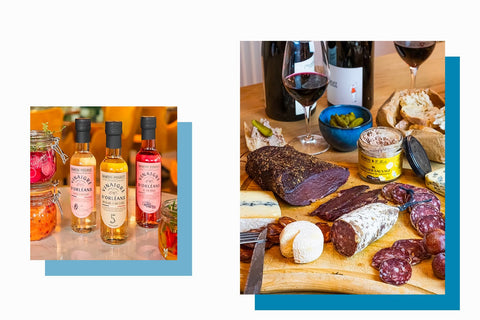The Manchego cheese is produced in the La Mancha region of Spain, which is also home to Don Quixote. It is made from pasteurised sheep's milk. It is one of the popular cheeses from Spain and comes under the PDO (DOP) guidelines.
The traditional use of grass moulds leaves a distinctive, characteristic zigzag pattern on the Manchego cheese. Authentic Manchego is only made from the Manchego sheep's milk. Manchego cheese is made from both pasteurised and unpasteurised milk. The farmhouse version is produced from unpasteurised milk while the industrial version is produced from pasteurised milk. The Corcuera Family was the first in all of Castilla La Mancha to make and commercialize Manchego Cheese. They produce the cheese in Toledo province.
The rind is inedible with a distinctive, traditional herringbone basket weave pattern, pressed on it. A typical ear wheat pattern is pressed onto the top and bottom wheels of the cheese. Manchego cheese is available in many varieties depending on its age.
Fresco - fresh cheese aged for 2 weeks. The flavour is rich and mild; rarely available outside Spain.
Semi Curado - semi-firm cheese aged around 3 weeks to 3 months. It is supple and moist. The flavour is fruity, grass, hay with a tangy note.
Curado - semi-firm cheese aged for 3-6 months. The flavour is caramel and nutty.
Viejo - firm cheese aged for 1-2 years. The flavour is sharp and it becomes crumbly in texture. It has a sweet, lingering taste.
Manchego cheeses are best paired with a sherry. Cheeses similar to Manchego are called 'Machego like cheeses', but the producers cannot legally name the cheese as Manchego.
Made from pasteurized or unpasteurized sheep's milk
Country of origin: Spain
Region: La Mancha
Type: semi-soft
Texture: firm and supple
Rind: waxed
Colour: pale yellow
Flavour: fruity, nutty, sweet, tangy
Aroma: grassy, pleasant
Vegetarian: no
Synonyms: Queso Manchego
Alternative spellings: Manchego Curado, Manchego Semi Curado, Manchego Viejo







